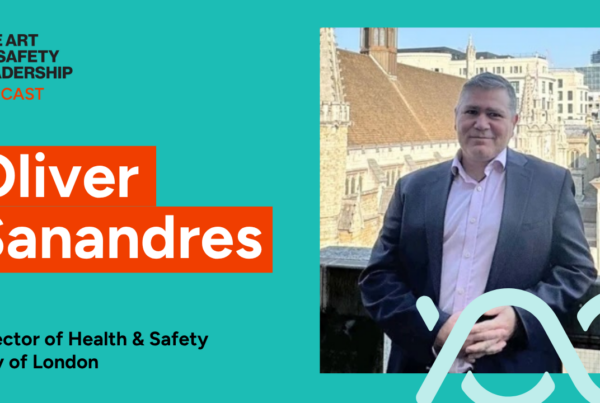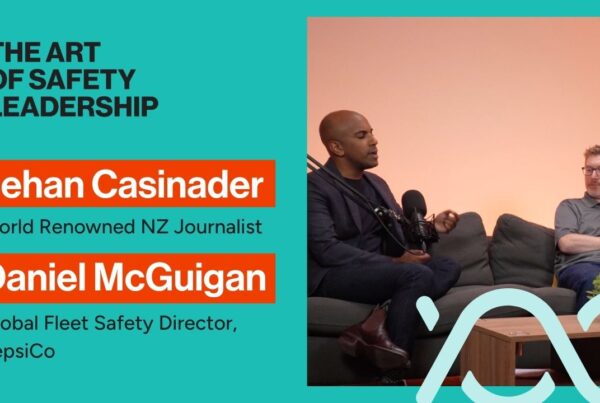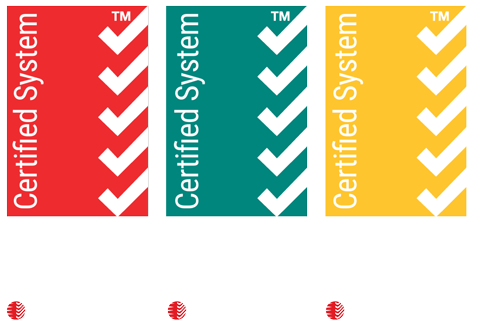When safety professionals struggle to secure investment or gain influence at the highest levels of an organisation, the problem often isn’t the value of what they’re proposing – it’s how they’re communicating that value.
In our latest episode of “The Art of Safety Leadership,” we spoke with Crystal Danbury, whose 21-year journey from nuclear technician to safety leader at FTSE 100 companies revealed a crucial insight: safety professionals need to translate their technical expertise into business language that resonates with executives.
The Accidental Safety Professional
Like many in the field, Crystal’s entry into safety was unplanned. “I applied to work in a lab helping clear up nuclear waste, and they put me in the wrong pile,” she explains. “I ended up joining as a junior safety technician.”
This “accident” proved fortuitous, providing hands-on experience in emergency planning and risk management in an environment where processes needed to be both simple and effective. Her early experience also highlighted a critical disconnect that would shape her leadership philosophy.
“There were two buildings on site – building four where the technicians sat and building nine where the leaders sat – and they never met,” Crystal recalls. “The leaders would design our safety processes without talking to us or seeing what our day looked like… We would laugh and bin the process and carry on doing what we knew was safe.”
This disconnect fueled her determination to bridge the gap between technical safety work and leadership decision-making, ultimately leading her through roles across rail, logistics, telecoms, and retail.
The Arrogance of Safety
One of Crystal’s most provocative insights challenges a fundamental mindset in the safety profession:
“We’re the only profession that walks into a boardroom and says, ‘you can’t put a price on safety, you just should give me whatever I need’ while everyone else has to do a business case and ROI.”
This “arrogance,” as Crystal puts it, creates a fundamental barrier to investment and influence. “We expect everyone to feel like we do. We work in our profession because we’re heart-led. And then we expect every person around the board to operate with the same mindset.”
The solution? Reframing safety as a commercial proposition that aligns with business objectives.
The True Cost of Harm
Crystal’s most powerful tool for translating safety into business language is her “True Cost of Harm” approach – a framework developed over years that quantifies the full financial impact of safety incidents.
“What blows me away is how many leaders can’t link the dots between enhanced performance, productivity, and safety,” she notes. By articulating this connection through hard numbers, Crystal transforms safety conversations from moral imperatives to strategic business discussions.
Her approach simplifies metrics from overwhelming dashboards to a focused few that generate meaningful conversations:
- Fatalities
- Life-changing injuries (permanent changes to body, mobility, or ability)
- Major recoverable injuries (high trauma events with physical recovery but lasting impact)
- Near-miss reporting
- Hazard reporting
“It’s not to say that all the other metrics aren’t important,” she explains. “But I only have a small amount of time with these people that dictate level of investment, level of engagement, and the narrative of how we talk about safety to the rest of the organization. I need to make those moments really matter.”
From Moral Imperative to Business Case
Crystal shares a practical example of how safety professionals can build their first “True Cost of Harm” business case by focusing on road traffic accidents:
- Identify what your insurance premiums are for vehicle operations
- Calculate what claims are costing the organization
- Add in “bent metal costs” – the everyday vehicle repair expenses
- Factor in absence costs from injuries (average hourly rate × hours lost)
- Include agency costs for covering absent workers
- Multiply by your company’s margin to show how much revenue must be generated just to cover these costs
This approach transforms abstract safety concerns into concrete business impacts.
“If you’re super brave, with just those five crunchy numbers, times it by your margin and say you had to make X – 100,000, 10,000, million, whatever – just to generate, just to pay for the accidents that happened this month… they’re going to determine whether they’re bothered or not.”
The Safety-Insurance Connection
One of Crystal’s most valuable insights comes from her unique role overseeing both safety and insurance – a connection that many organizations miss.
“For me, the insurance is the end-to-end piece for safety,” she explains. “There are two things when you’re trying to improve things from an insurance perspective: you need to lower the amount of claims, and you need to increase your rate of defensibility.”
Both objectives tie directly to effective safety management. Lower claims come from preventing harm, while defensibility improves with proper training, risk assessment, and documentation.
Crystal encourages safety professionals to connect with their insurance teams to understand:
- What types of claims are most frequent and costly
- Why certain claims couldn’t be defended
- How specific safety improvements could reduce premiums or deductibles
“When you start to look at insurance costs in terms of the premiums plus claims plus whatever your deductibles are, and you start adding those to your true cost of harm piece… you start to turn the handle on where we are complacently spending money.”
Beyond Empire Building
Crystal also challenges safety professionals to look critically at their own operations. Rather than building empires with large teams and complex processes, she advocates for focus and efficiency.
“I feel really protective about the seats, the roles that I create,” she explains. “I tend to write every role in my team myself, and I do not write a role until I have my strategy nailed down and I understand what needs tackling.”
This perspective extends to all safety activities – from training to systems to reporting. For each element, she asks: Does it control a risk? Does it drive benefit? Is it worth the cost?
“There is a bit about holding your hand up as a safety leader to say, ‘Safety in its current guise costs you this, the true cost of harm is here, but I also understand you’re investing X at the moment and getting a Y loss. Am I, as a safety leader, genuinely squeezing every ounce of value out of what you’re already giving me?'”
The Path Forward
For safety professionals looking to elevate their influence, Crystal offers clear advice:
- Simplify your metrics to focus on what truly matters
- Quantify the financial impact of harm in your organization
- Build business cases that demonstrate clear ROI
- Connect safety outcomes to operational productivity
- Be willing to challenge ineffective processes, even your own
Crystal’s insights represent a powerful shift in how safety professionals can position their work – not just as a moral imperative or compliance requirement, but as a strategic business function that drives real commercial value.
To hear Crystal’s full story, including detailed strategies for developing your own True Cost of Harm models and engaging successfully with executives, listen to the complete episode. Whether you’re a safety professional seeking to increase your influence or a business leader wanting to better understand the commercial value of safety, this conversation offers transformative perspectives on translating safety into business success.






